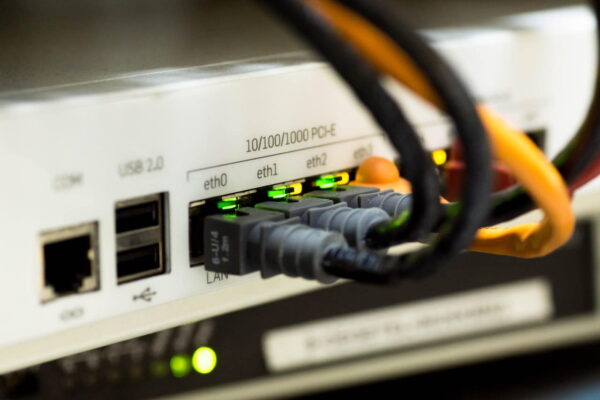In today’s interconnected world, technology plays a vital role in our daily lives. One of the cornerstones of modern technology is Local Area Networks (LANs). Whether you are at home, in the office, or at a coffee shop, chances are you are connected to a LAN. In this comprehensive guide, we will explore what LANs are, how they work, and why they are essential in facilitating seamless communication and data sharing. So, let’s dive in!
What is a Local Area Network (LAN)?

A Local Area Network (LAN) refers to a network of interconnected devices within a limited geographical area, such as a home, office building, or campus. LANs are designed to enable efficient and secure communication and resource sharing among connected devices. These devices can include computers, printers, servers, and other network-enabled devices.
How Do LANs Work?
LANs work on a simple yet powerful principle of connecting multiple devices through network cables or wireless connections. Each device within the LAN is assigned a unique identifier called an IP address, allowing them to communicate and exchange data with one another.
Components of a LAN
A typical LAN consists of the following components:
- Devices: The devices in a LAN can vary from personal computers and laptops to smartphones and IoT devices.
- Network Interface Cards (NICs): NICs are hardware components installed in each device to facilitate network connectivity. They allow devices to send and receive data over the LAN.
- Switches: Switches are essential networking devices that serve as the central point for connecting devices in a LAN. They help efficiently direct data packets between devices, ensuring smooth communication.
- Routers: While LANs primarily operate within a confined area, routers are sometimes used to connect multiple LANs or extend the network to the internet.
- Cables and Wi-Fi: LANs can be set up using Ethernet cables or wireless Wi-Fi connections, depending on the requirements and infrastructure.
Types of LAN Configurations
There are several types of LAN configurations commonly used:
1. Ethernet LAN
Ethernet LANs use Ethernet cables to connect devices in a star topology, where each device connects to a central switch or hub. This type of LAN is widely used in homes and offices due to its simplicity and cost-effectiveness.
2. Wireless LAN (WLAN)
Wireless LANs, as the name suggests, use Wi-Fi technology to connect devices without the need for physical cables. WLANs provide greater flexibility and mobility, making them popular in environments where wired connections are not feasible.
3. Token Ring LAN
Token Ring LANs operate by passing a “token” from one device to another in a ring-like fashion. The device holding the token has the authority to transmit data, ensuring fair access to the network.
4. Bus LAN
In a bus LAN, all devices are connected to a single communication line, or “bus.” When a device wants to communicate, it broadcasts the message to all other devices on the bus. The intended recipient accepts the message, while others ignore it.
Importance of LANs
Local Area Networks play a crucial role in modern communication and data sharing for various reasons:
1. Resource Sharing
LANs facilitate the sharing of resources such as printers, scanners, and storage devices. This enables cost-effective utilization of resources and promotes collaboration among users.
2. Fast and Efficient Communication
With LANs, users can communicate with each other through instant messaging, email, or file sharing. The high-speed connectivity ensures quick and efficient data transmission.
3. Centralized Management
LANs allow for centralized management of network resources, making it easier for administrators to maintain and monitor the network effectively.
4. Enhanced Security
LANs can implement security measures to protect sensitive data and prevent unauthorized access. Firewalls, encryption, and access control mechanisms help safeguard the network.
LAN Troubleshooting and Maintenance
While LANs offer numerous benefits, they can encounter issues that need troubleshooting. Common LAN issues include connectivity problems, slow data transfer, and device configuration errors. Regular maintenance and updates are crucial to ensure optimal network performance.
Conclusion
In conclusion, Local Area Networks (LANs) form the backbone of modern communication and data sharing. Through their efficient resource sharing, fast communication, and enhanced security, LANs have revolutionized the way we interact with technology. Whether it’s connecting devices at home or facilitating large corporate networks, LANs play a pivotal role in keeping us connected and productive in the digital age. Understanding the basics of LANs empowers individuals and businesses to make the most out of their network infrastructure, ensuring seamless connectivity and efficient data exchange.
Finally, a clear explanation of LAN! The breakdown of Ethernet LAN and Wireless LAN was particularly helpful. I now understand why my office uses Ethernet cables for a more stable connection.
Great article! The section on resource sharing within a LAN answered all my questions. I can now set up a shared printer for my home office with confidence.
I didn’t realize the importance of Network Interface Cards until I read this. This guide has made me more confident in managing my small home network. Thanks for the insightful info!